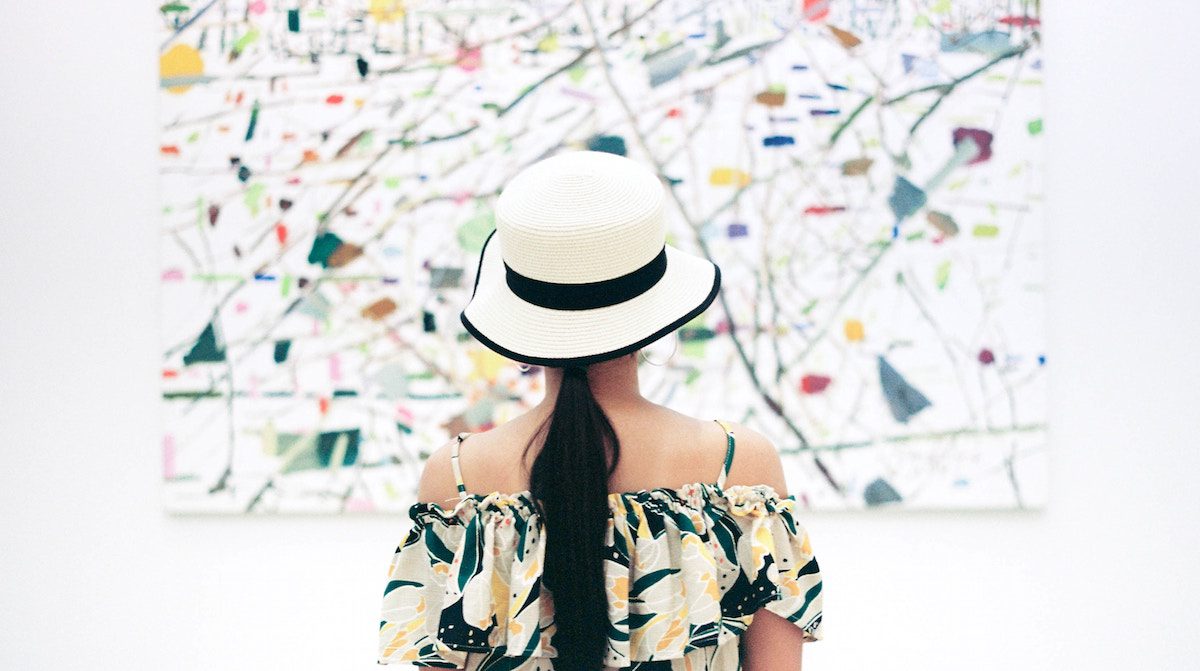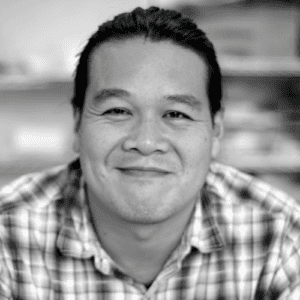The winter months can be some of the toughest for art teachers. The energy of the beginning of the school year has worn off, and spring and summer breaks feel light years away. Depending on where you live, the cold and gray winter skies might be sapping your energy, too. Winter break provides a short recharge period, but how can you keep that enthusiasm going once you’re back at school?
Here are 5 tips for keeping your spirits up.
Who knows, they may even spark a few creative ideas along the way for your classroom!
1. Visit a local museum.
Spending a few hours in a space that inspires and rejuvenates you is always a great start. If you’re in a large urban center, there are probably a lot of options to check out. But, even in relatively rural locations, the number of potential spaces to visit might surprise you. Don’t limit yourself to art museums. Historical museums, science museums, and cultural institutions can all be great spaces to spend an hour or two.
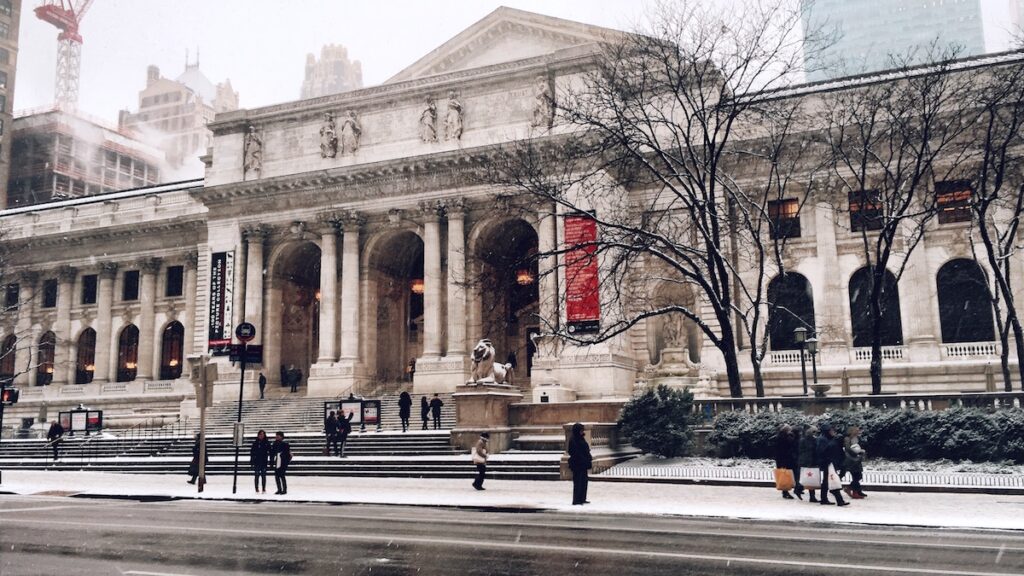
I love looking for museums a bit off the beaten path or that specialize in something with which I am unfamiliar. Some of my favorites include places like the International Museum of Surgical Science in Chicago or the Museum of Chinese in America in New York City. Both non-art museums surprised me regarding the depth and insight they provided in their area of focus.
Here are few other things to take note of while visiting:
- Feel like a student again.
Remember what it’s like to be a learner and what it feels like to look at new content for the first time. Strategies the museum uses to help you learn might work in your classroom, too. - Talk with a staff member.
An education specialist at the space can work with you on ways to bring the presented info to the work you’re doing. - Look more closely at the exhibition design.
Artifact presentation in the space might give you an idea for your next student show.
2. Visit an art gallery.
Local galleries often host art walk events or partner with other institutions to bring in foot traffic. It’s a great chance for you to connect with a gallerist or artist and talk art! When we get immersed in teaching, we can go an entire day without talking to another adult, nevermind another artist or arts educator. One quickly forgets how enriching conversations about art with other artists and educators can be; it can inspire both your own artmaking practice as well as a new project in your classroom. Gather together a couple of art teachers and make a night of it by attending multiple shows!
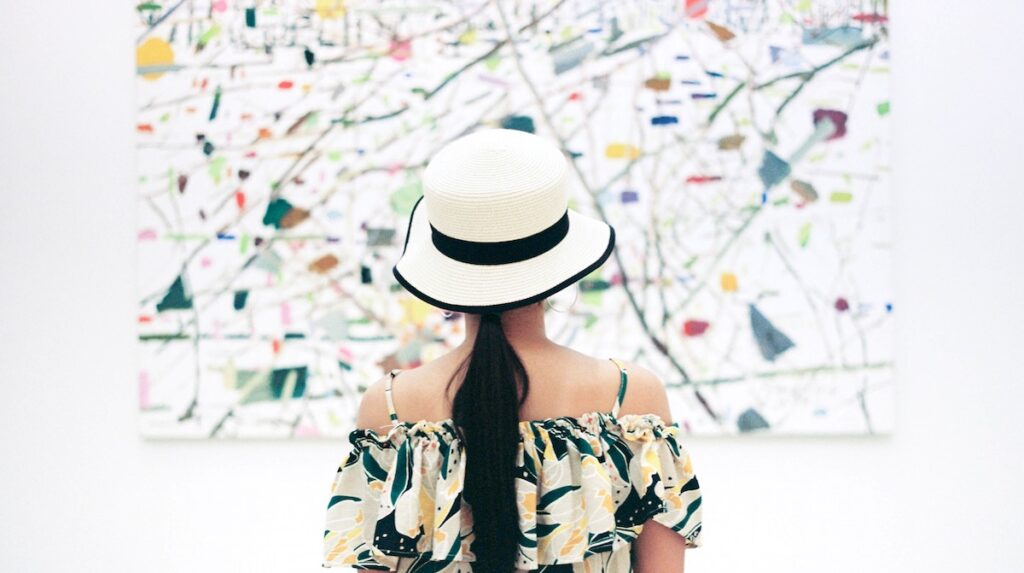
3. Check out the public library.
Maybe not a space we typically think of when talking inspiration, but I love checking out the public library for a creative spark. Libraries have shifted from spaces filled with books and quiet shelves to more active centers of gathering and community.
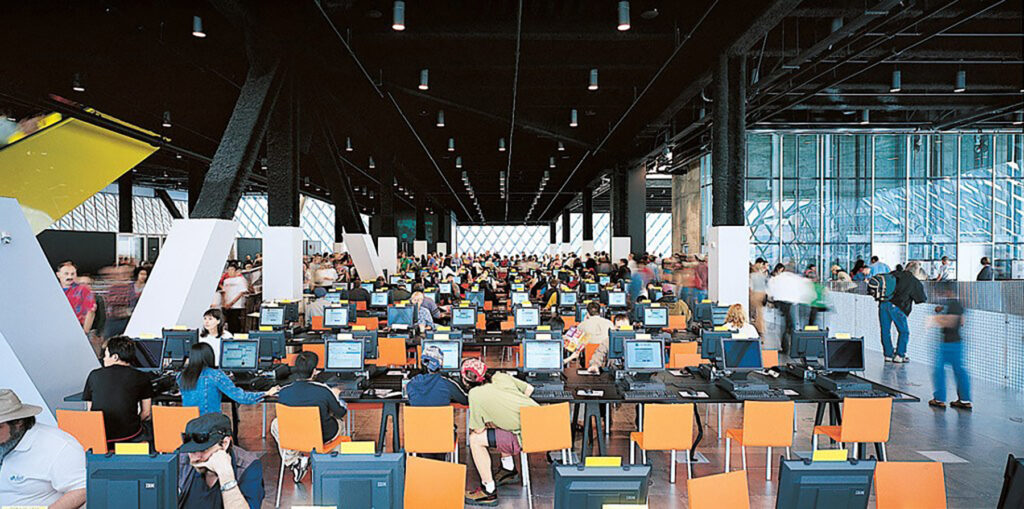
Plus, there are lots of libraries that have been recently renovated and built to incorporate work by local artists and community members, whether as permanent installations or through community galleries. As a person who loves stuff like graphic novels and comics, I’ll sometimes stop in, grab a few off the shelf and just read for an hour or two. Maybe you’d like to pick up an art book or biography to recharge and refuel. Whatever the case, these aren’t the same libraries many of us grew up knowing. Setting aside just a bit of time to read, research or relax can make a big difference!
4. Volunteer or work in an arts space.
If you’ve got a bit more time and can take a couple of hours a week for yourself, volunteering as a docent or working a drop-in art activity at the museum can give just the kick you might need to re-energize! You might be thinking to yourself, “I’ve just spent my entire week teaching art and talking about art. Why would I willingly go to another place to do more of the same?” Well, that’s the point! Shifting your environment and audience and engaging with artwork in a different space can inspire a new perspective on your classroom teaching practice. It can also help you build connections with the local artistic community and learn about program opportunities and exhibitions the museum is offering to teachers ahead of time. Check out the volunteer or education tabs of your local organization’s website for more info.
5. Find engaging professional development.
And finally, there’s always the weekend workshop or program your district, the art museum or some other arts partner might be offering as professional development. I know it’s often tough to think about heading to a workshop or PD event after teaching all day, or potentially giving up one of those precious weekend days, but they can provide much-needed materials, connections, and resources, as well as a chance to just talk art ed with other teachers. Look at listings your state and local Art Education Association might have compiled to find providers and organizations to link up with. Or, if you’d rather fit in PD on your own time, there’s always Art Ed PRO! Finally, if you haven’t already, check out the upcoming Winter 2018 Art Ed Now Conference; it will be a great opportunity to tap into a community of inspiring art teachers and their work!
How do you refresh and refuel as an art teacher?
What is your favorite space to visit that gives you a creative spark?
Magazine articles and podcasts are opinions of professional education contributors and do not necessarily represent the position of the Art of Education University (AOEU) or its academic offerings. Contributors use terms in the way they are most often talked about in the scope of their educational experiences.
